Power with Restraint: Seven Top Saint-Émilion Grand Cru Classé Estates Deliver a Top Vintage in 2018’s Miracle Harvest (7-Bottle Pack $385, Tax Included)
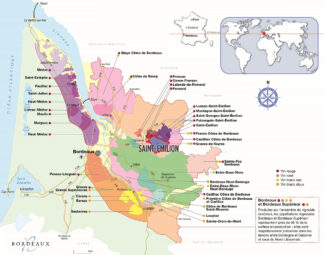 In Bordeaux, Cabernet Sauvignon is the duke of the manor while Merlot is the duchess, and if these terms sound antiquated in 2021, be assured that the traditions of the region are delightfully established. And nowhere in Bordeaux is this genuflection to history more obvious than in Saint-Émilion, which is speckled with Roman ruins and at whose center stands a limestone church built by the region’s namesake, Saint Emilian of Lagny.
In Bordeaux, Cabernet Sauvignon is the duke of the manor while Merlot is the duchess, and if these terms sound antiquated in 2021, be assured that the traditions of the region are delightfully established. And nowhere in Bordeaux is this genuflection to history more obvious than in Saint-Émilion, which is speckled with Roman ruins and at whose center stands a limestone church built by the region’s namesake, Saint Emilian of Lagny.
Saint-Émilion was the first region in Bordeaux to export wines and boasts the oldest wine society in France: The Jurade of St Émilion, formed in 1199. The vineyards are numerous and small, averaging around fifteen acres and spread across a triad of terroirs that can be roughly defined as a central limestone plateau, the clay and chalk-rich slopes of that plateau and the flatland beyond. What all three topographical areas have in common is cooler soils better suited to Merlot and Cabernet Franc. For the most part, Cabernet Sauvignon does not ripen well in Saint-Émilion except in small pockets, most notably on an ancient alluvial terrace in the northwest, where free-draining gravel soils are similar to those found in the best properties of the Graves and Médoc.
An official classification of Saint-Émilion châteaux was first conducted in 1955, updated in 1996, 2006 and again in late 2012. As a result, the best wines of the region can be found in two principal tiers: Grand Cru Classé and Premier Grand Cru Classé. Grand Cru Classé marks a significant quality upgrade from standard Saint-Émilion Grand Cru wines, which number in the hundreds. The Saint-Émilion wine classification is the only one to challenge itself every ten years and is held to be the most modern and progressive wine classification that exists. This ten-year renewal is a real advantage, because it inspires all the Saint-Émilion appellation winegrowers to sustain their quest to make unique wines.
SAINT-ÉMILION 2018: EXCELLENCE FORGED OUT OF CLIMATIC EXCESS
2018 represents a vintage in which Saint-Émilion producers snatched victory from the jaws of defeat; ‘Forbes’ wine writer Tom Mullins refers to it as a ‘dark star vintage’, meaning that it is powerful with profoundly deep black fruit flavors integrating beautifully with acidity.

An unusually wet spring produced more rain than the appellation usually receives all year, leaving the vines susceptible to mildew and a prevailing fear that the harvest might be doomed. But a sunny June and a balmy July dried things out as the summer developed into the hottest since 2003 with no substantial rainfall until after harvest. Vignerons were able to pick at their chosen level of maturity and optimal phenolic ripeness was achieved throughout the appellation.
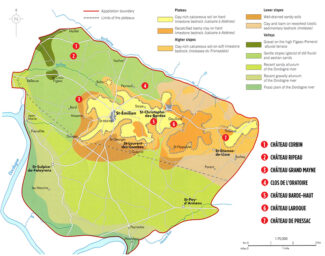
1- Château Corbin
Politically correct connoisseurs may roll their eyes when Merlot is referred to as ‘feminine’, but the line of succession at Château Corbin is unabashedly woman; it has been passed from mother to daughter for multiple generations. Anabelle Cruse-Bardinet is the current owner, and produces silken, sensuous and supple wines from older vines that are, for the record, 92% Merlot. The Cabernet Franc that makes up the rest is often fermented in large glass amphora, and the 18 stainless steel tanks ranging in size from 40 to 80 hectoliters allow for parcel by parcel vinification. The terroir is neatly split between clay-heavy soil peppered with iron deposits and sand and gravel.
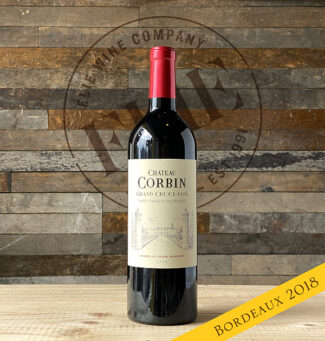 2018 Château Corbin, Saint-Émilion Grand Cru Classé ($55) is 90% Merlot and 10% Cabernet Franc with a perfumed nose of black raspberries, blackberries, toasted spice, dried flowers, and loamy earth with some classic Saint-Émilion chalky minerality, quality tannins, and a long finish.
2018 Château Corbin, Saint-Émilion Grand Cru Classé ($55) is 90% Merlot and 10% Cabernet Franc with a perfumed nose of black raspberries, blackberries, toasted spice, dried flowers, and loamy earth with some classic Saint-Émilion chalky minerality, quality tannins, and a long finish.
2- Château Ripeau
It’s said that good fences make good neighbors, but if they share good terroir, the rest is immaterial. As such, Château Ripeau’s 40 acres, bordering Pomerol, share breathing air with Château Cheval Blanc, Château Corbin and Château La Dominique, yielding grapes from a similar aggregate of sand, gravel, limestone and iron-infused clay. In December, 2014, Jean and Françoise de Wilde sold Château Ripeau to Cyrille and Nicolas Grégoire, sons of James Grégoire, best known as the previous owner of Fronsac’s Château La Rivière. The brothers have hauled the estate into the 21st century, upgrading the facility, switching to organic farming and replanting 40,000 feet of vines to better densities with improved drainage and more diligent pruning, making them among our favorite folks in the neighborhood.
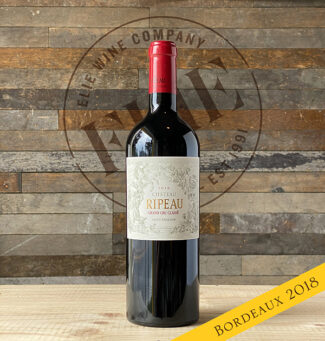 2018 Château Ripeau, Saint-Émilion Grand Cru Classé ($50) is deep and brooding with aromas of plum, black cherry, and dark earth wending a path through a complex and layered palate. Graphite, toast, and cherries intermingle with minerals and elegant, soft tannins; the opulent fruit is seamlessly integrated and with enough backbone to carry it through the next decade and beyond.
2018 Château Ripeau, Saint-Émilion Grand Cru Classé ($50) is deep and brooding with aromas of plum, black cherry, and dark earth wending a path through a complex and layered palate. Graphite, toast, and cherries intermingle with minerals and elegant, soft tannins; the opulent fruit is seamlessly integrated and with enough backbone to carry it through the next decade and beyond.
3- Château Grand Mayne
The Saint-Émilion estate of Grand Mayne is driving a Cabernet Franc steamroller; the 40 acres are currently planted to 78% Merlot, 19% Cabernet Franc and 3% Cabernet Sauvignon, but the plan of the Nony family (who has presided over Grand Mayne since 1934) is to add Cab Franc vines until they make up 35% of the total. This vineyard is located in a single block to the west of the village of St. Émilion, at the foot of the plateau. The vines that creep up the slope (bordering Château Beau-Séjour Bécot) are planted in clay/limestone soil, and in the portion that extends across the flats grow into a layer of sand that offers better drainage—a plus when the season begins with a damp overture, as it did in 2018.
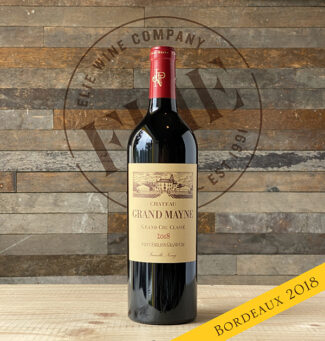 2018 Château Grand Mayne, Saint-Émilion Grand Cru Classé ($59) is rich, lush, round and packed with sweet, ripe, fresh, opulent black cherries and chocolate. The wine has good concentration, a nose of smoke, licorice, dark red pit fruits and a finish stocked with dusty chocolate-covered plums.
2018 Château Grand Mayne, Saint-Émilion Grand Cru Classé ($59) is rich, lush, round and packed with sweet, ripe, fresh, opulent black cherries and chocolate. The wine has good concentration, a nose of smoke, licorice, dark red pit fruits and a finish stocked with dusty chocolate-covered plums.
4- Clos de l’Oratoire
‘Fronsac Molasse’ sounds more sophisticated than ‘sand over clay’, but either way, it’s perfect ground to nurture Merlot vines, and as such, 80% of l’Oratoire vines are of that variety. Once a part of neighboring Château Peyreau, l’Oratoire is relatively new kid on the block, especially compared to Saint-Émilion estates with roots delving through centuries. Peyreau split in two around the time of the Saint-Émilion classification (1955), and both properties were purchased by Joseph-Hubert Graf von Neipperg, the father of the current owner, Stephan von Neipperg. At around thirty acres, the estate is farmed with stainable viticulture methods, without herbicides or pesticides.
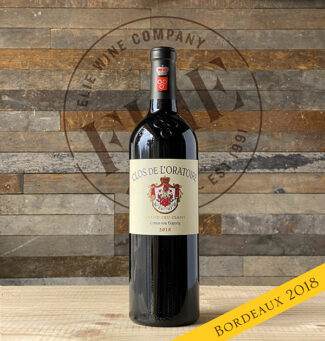 2018 Clos de l’Oratoire, Saint-Émilion Grand Cru Classé ($61): The wine blends 85% Merlot and 15% Cabernet Franc; at the core you’ll find licorice, smoke, truffles, cherry, flowers, wet earth, soft tannins and a dried, red pit fruit finish.
2018 Clos de l’Oratoire, Saint-Émilion Grand Cru Classé ($61): The wine blends 85% Merlot and 15% Cabernet Franc; at the core you’ll find licorice, smoke, truffles, cherry, flowers, wet earth, soft tannins and a dried, red pit fruit finish.
5- Château Barde-Haut
Shored up by more than 250 years of history, Sylviane Garcin-Cathiard (who purchased Barde-Haut in 2000) felt confident in steering the estate toward the next quarter millennia. That involved a modern, minimalist remake of the winemaking facility by Paris architect Nadau Lavergne along with a ‘green roof’ with solar panels, filters to collect and recycle rainwater and a small wind turbine to create outdoor lighting. Meanwhile, the terroir continues to produce—the best sits atop the plateau where clay is layered above chalk soils and limestone.
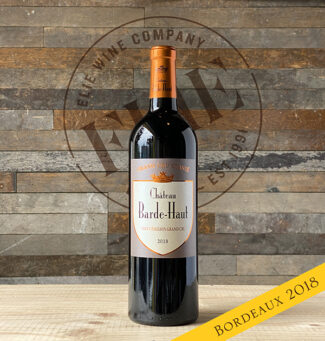 2018 Château Barde-Haut, Saint-Émilion Grand Cru Classé ($53) boasting 80% Merlot and 20% Cabernet Franc, the wine is beautifully balanced with a wonderful sense of purity and elegance; ripe black cherry and blueberry fruits alongside medium to full-bodied aromas and flavors of chocolate, spring flowers, violets and a kiss of chalky minerality.
2018 Château Barde-Haut, Saint-Émilion Grand Cru Classé ($53) boasting 80% Merlot and 20% Cabernet Franc, the wine is beautifully balanced with a wonderful sense of purity and elegance; ripe black cherry and blueberry fruits alongside medium to full-bodied aromas and flavors of chocolate, spring flowers, violets and a kiss of chalky minerality.
6- Château Laroque
Laroque is the biggest estate in Saint-Émilion and perhaps the grandest; they refer to themselves as ‘a paradise of limestone’. Laroque’s terroir is irreplaceable, but it is the human touch that has carried this iconic château from a bulk producer to ‘Grand Cru Classé’ and the estate is happy to name names: First, Paul Boisard, the 19th century estate manager who brought Laroque wines to the attention of the Bordeaux négociants with a gold medal at the 1900 Paris Universal Exhibition; then Bruno Sainson, who oversaw thirty vintages and lifted Château Laroque to the rank of Saint-Émilion Grand Cru Classé; and of course, current manger, oenologist David Suire, who (with a team of 19) has been tasked with preserving the Laroque heritage while embracing the challenges the future of the industry holds.
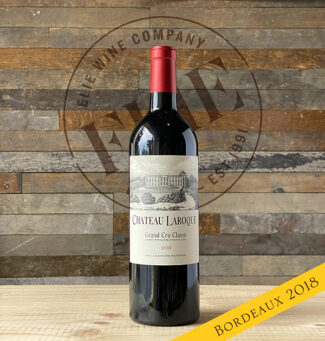 2018 Château Laroque, Saint-Émilion Grand Cru Classé ($42): 97% Merlot and 3% Cabernet Franc; it bursts from the glass with flamboyant notes of stewed black plums, Black Forest cake and boysenberries, plus hints of candied violets, star anise and unsmoked cigars with a playful waft of sassafras.
2018 Château Laroque, Saint-Émilion Grand Cru Classé ($42): 97% Merlot and 3% Cabernet Franc; it bursts from the glass with flamboyant notes of stewed black plums, Black Forest cake and boysenberries, plus hints of candied violets, star anise and unsmoked cigars with a playful waft of sassafras.
7- Château de Pressac
The medieval fortress of Pressac has been making wine since 1737, and back in the day, was so committed to the Auxerrois grape that it was renamed ‘Noir de Pressac.’ It is still grown on the estate’s hundred acres, but today it goes by the name of Malbec. (It’s also known as ‘Côt’ in Cahors, where it is the dominant variety). Pressac is unique in Saint-Émilion in that it reserves vineyard space for all six of Bordeaux’s allowable varieties, with 69% on the vineyard devoted to Merlot, 18% to Cabernet Franc, 9% to Cabernet Sauvignon, 2.5% to Malbec, 1.5% to Carménère and 1% to Petit Verdot. The confluence of all three of the appellations soil types makes this possible; the limestone plateau on which the château sits yields to a clay-limestone slope surrounding the hill and at the foot of the slope, silty clay-limestone, each occupying equal parts of the estate.
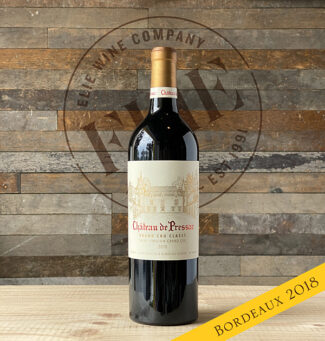 2018 Château de Pressac Saint-Émilion Grand Cru Classé ($42): Ripe blackberry and warm plums are followed by notes of cedar, graphite, herbs de Provence, soft leather and a hint of mint.
2018 Château de Pressac Saint-Émilion Grand Cru Classé ($42): Ripe blackberry and warm plums are followed by notes of cedar, graphite, herbs de Provence, soft leather and a hint of mint.
- - -
Posted on 2021.08.26 in France, Bordeaux, Wine-Aid Packages
Featured Wines
- Notebook: A’Boudt Town
- Saturday Sips Wines
- Saturday Sips Review Club
- The Champagne Society
- Wine-Aid Packages
Wine Regions
Grape Varieties
Aglianico, Albarino, Albarín Blanco, Albarín Tinto, Albillo, Aleatico, Arbanne, Aubun, Barbarossa, barbera, Beaune, Biancu Gentile, bourboulenc, Cabernet Franc, Cabernet Sauvignon, Caino, Caladoc, Calvi, Carcajolu-Neru, Carignan, Chablis, Chardonnay, Chasselas, Clairette, Corvina, Cot, Counoise, Erbamat, Ferrol, Fiano, Frappato, Friulano, Fromenteau, Fumin, Garnacha, Gewurztraminer, Godello, Graciano, Grenache, Grolleau, Groppello, Juan Garcia, Lambrusco, Loureira, Macabeo, Macabou, Malvasia, Malvasia Nera, Marsanne, Marselan, Marzemino, Melon de Bourgogne, Merlot, Mondeuse, Montanaccia, Montepulciano, Morescola, Morescono, Moscatell, Muscadelle, Muscat, Natural, Nero d'Avola, Parellada, Patrimonio, Petit Meslier, Petit Verdot, Pineau d'Aunis, Pinot Auxerrois, Pinot Blanc, Pinot Gris, Pinot Meunier, Pinot Noir, Poulsard, Prieto Picudo, Rondinella, Rousanne, Roussanne, Sangiovese, Sauvignon Blanc, Savignin, Semillon, Souson, Sparkling, Sumoll, Sylvaner, Syrah, Tannat, Tempranillo, Trebbiano, Trebbiano Valtenesi, Treixadura, Trousseau, Ugni Blanc, vaccarèse, Verdicchio, Vermentino, Viognier, Viura, Xarel-loWines & Events by Date
- April 2024
- March 2024
- February 2024
- January 2024
- December 2023
- November 2023
- October 2023
- September 2023
- August 2023
- July 2023
- June 2023
- May 2023
- April 2023
- March 2023
- February 2023
- January 2023
- December 2022
- November 2022
- October 2022
- September 2022
- August 2022
- July 2022
- June 2022
- May 2022
- April 2022
- March 2022
- February 2022
- January 2022
- December 2021
- November 2021
- October 2021
- September 2021
- August 2021
- July 2021
- June 2021
- May 2021
- April 2021
- March 2021
- February 2021
- January 2021
- December 2020
- November 2020
- October 2020
- September 2020
- August 2020
- July 2020
- June 2020
- May 2020
- April 2020
- March 2020
- February 2020
- January 2020
- December 2019
- November 2019
- October 2019
- September 2019
- August 2019
- July 2019
- June 2019
- May 2019
- April 2019
- March 2019
- February 2019
- January 2019
- December 2018
- November 2018
- October 2018
- September 2018
- August 2018
- July 2018
- June 2018
- May 2018
- April 2018
- March 2018
- February 2018
- January 2018
- December 2017
- November 2017
- October 2017
- September 2017
- August 2017
- July 2017
- June 2017
- May 2017
- April 2017
- March 2017
- February 2017
- January 2017
- December 2016
- November 2016
- October 2016
- September 2016
- August 2016
- July 2016
- June 2016
- May 2016
- April 2016
- March 2016
- February 2016
- January 2016
- December 2015
- November 2015
- October 2015
- September 2015
- August 2015
- July 2015
- June 2015
- May 2015
- April 2015
- March 2015
- February 2015
- January 2015
- December 2014
- November 2014
- October 2014
- September 2014
- August 2014
- July 2014
- June 2014
- April 2014
- March 2014
- February 2014
- January 2014
- December 2013
- November 2013
- October 2013
- September 2013
- August 2013
- July 2013
- June 2013
- May 2013
- April 2013
- March 2013
- February 2013
- January 2013
- December 2012
- November 2012
- October 2012
- February 2004
Search



